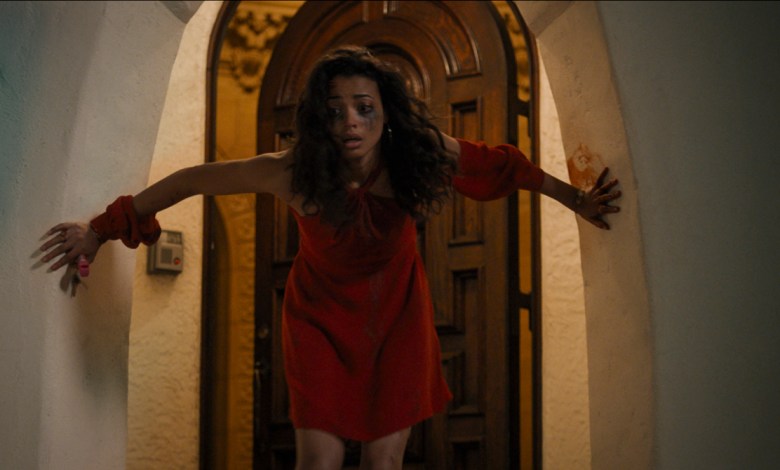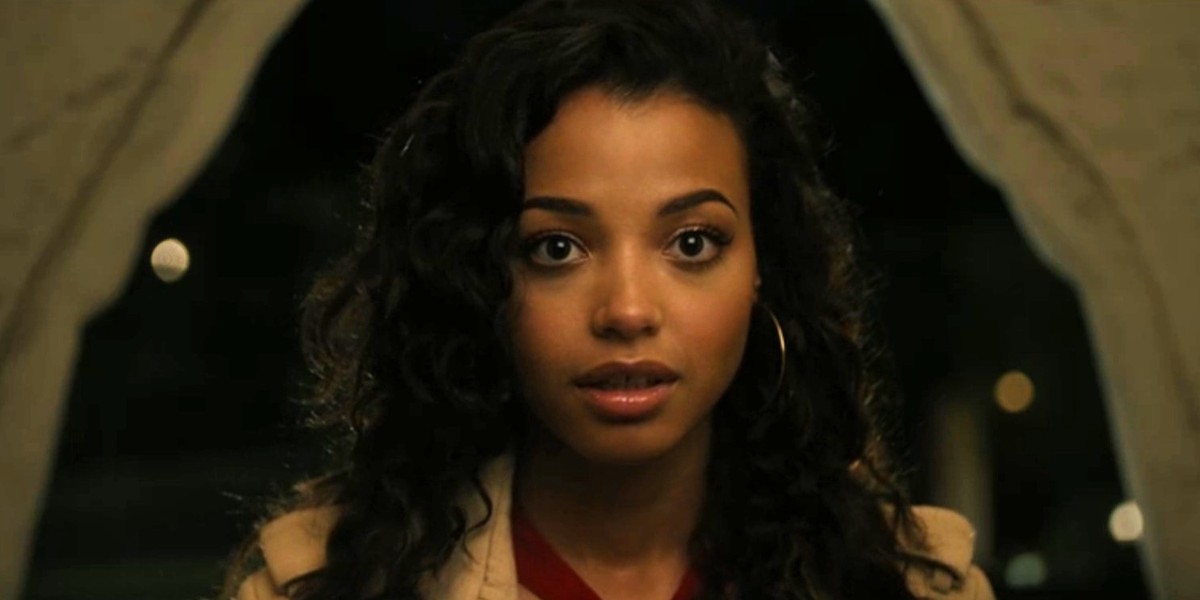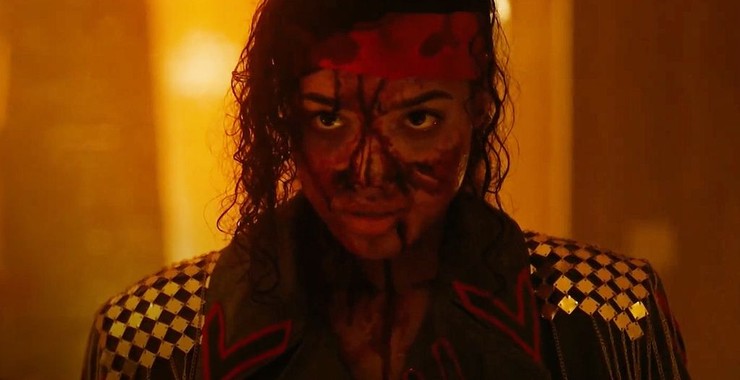Inuit Girls Hunt Alien Monsters in ‘Slash/Back’
Inuit girls use their Inuit tradition to hunt down alien monsters, enough said.
Incluvie Foundation Gala - Learn More


Reaching nearly Halloween, Amazon Prime released Run Sweetheart Run (2020), the most relatable horror film for women. Directed by Shana Feste, Run Sweetheart Run follows a single Black mother, Cherie, who wants to land a job as a lawyer, but is instead demoted to a secretary at a prestige law firm. Cherie’s boss sets her up with a business meeting with a new client. But this meeting quickly turns into a date, and Ethan (the client) seems to be the perfect man a woman could ever want… almost too perfect. Ethan shows his dark side when he attacks Cherie after inviting her to spend the night with him. Long story short, Ethan is not exactly your typical psycho boyfriend (he’s more supernatural than human). Ethan reveals he intends to “hunt” Cherie, and if she can survive until morning, he will let her go. It’s safe to say that is a bloody game of cat-and-mouse. Cherie is a Black woman in a red dress, running through the dark streets of Los Angeles from a supernatural madman, and to make matters worse, she’s on her period. But, what makes Run Sweetheart Run as scary as it is relatable, is its ability to connect to women through women spectatorship.

One of the uncomfortably relatable scenes on Run Sweetheart Run is our main protagonist being groped on the bus (a near-universal fear for women riding public transit). The grope scene was short and intense, with a prolonged effect on women spectators. As Cherie is talking on the phone on the crowded bus, we see a man eyeing her from afar. He then follows her to the back of the bus and gradually touches her butt. A lady on the bus notices this assault, yet she did nothing, but looked away. After the assault, Cherie fears for her own safety, and understandably, does what many women would do in this situation: move away. While the horror of this film is surviving the night from a homicidal date, this early scene emphasizes the struggles women have to deal with every day.

A common trope some horror films use, particularly when there is a woman-lead, is the period opening scene. The period opening scene is what it sounds like. It’s usually around the beginning of a horror film where our protagonist gets her period, which acts as an omen, foreshadowing bad events. There are many myths that foretell when a young girl or woman has her period, her body is rendered vulnerable to the supernatural and a target for predatory men. The scene of Cherie getting her period definitely acts as a bad omen, but, unlike Carrie (1976), which made periods seem horrifying, Run Sweetheart Run shows how inconvenient it is for women to get their period, especially, when they’ve run out of tampons!
Throughout the film, not only is Cherie running for her life to escape her psycho date, but she also struggles to find a tampon. For women spectators, we see this as a toppled scenario: not only is she being chased by her date who wants to kill her, she’s running for her life while on her period. Director Shana Feste made an interesting choice for Cherie to search for tampons instead of sanitary pads. The choice of tampons is intriguing because not all women feel comfortable wearing one; not to mention they fear them (if they’ve never used tampons). I think the choice of our character searching for tampons rather than pads has to do with the film’s theme of control. You see, Ethan has the supernatural ability to control men, which is true in this film, and in the real world (since gender ideology lets men have more power than women). Tampons are a metaphor for Cherie having control of her fate, and plenty of women can empathize with the desire to have power and control of their life.

A pattern I’ve noticed throughout this film is we get beautiful close-up shots of Cherie. These close-ups of Cherie are what allow women spectatorship in Run Sweetheart Run. These close-ups keep our focus on Cherie. And that is the woman’s gaze. What I love about these shots of Cherie is that they are not at all objectifying our protagonist, rather, they are warm and inviting for the woman spectator, almost giving a safe space and making us forget we are watching a horror movie. But, this gaze quickly reverses to Ethan. The first time we see the gaze reversal is when Ethan invites Cherie to stay the night at his house; as the camera zooms to follow Cherie inside the house, he looks right at us, and puts his hand out to stop the camera from zooming; the camera then zooms back, as he closes the door, and we only hear Cherie’s screams. The significance of the gaze reversal is to convey how men have a long history of making sure their perspective is the top priority; it’s one reason we have more men behind the camera than women. This also showcases Ethan’s power of control over men and the camera itself. It is only at the end, when Cherie defeats Ethan and picks up the camera, that we return to her gaze, as the villain is defeated.

Some woman-led horror movies end with the final girl facing the killer by herself, but not in this film. Cherie’s battle with Ethan is much bigger than her because his existence affects all women. It is revealed that Cherie isn’t Ethan’s only victim, and if she doesn’t kill him, she won’t be his last. Ethan is a supernatural creature who ensnares women and catches them by smelling their blood (so, having your period while you’re being chased by a blood-smelling creature doesn’t give you good odds). But, luckily for Cherie, there’s a safe haven for women like Cherie, who are being hunted by Ethan. The sanctuary is at a spa; the spa is inhabited by women who are trained in martial arts, and their sole purpose is to stop Ethan from killing more women. A spa is a place where women are surrounded by women; it creates an escape from patriarchal institutions and, in this case, Ethan. Cherie becomes a warrior in this scene; she is no longer the damsel in distress, and she’s not alone in this fight against evil. In the end, with the help of the leader of the women, “The First Lady” (Shohreh Aghdashloo), Cherie attacks Ethan at it his most vulnerable moment during daylight, and he is finally killed. After her victory, Cherie did what any mother would do after battling an evil entity, rush home to be with her baby daughter.
Related lists created by the same author
Inuit girls use their Inuit tradition to hunt down alien monsters, enough said.
Related diversity category
This list was made with the intention of celebrating comedic craft and a love of seeing more women of colour and newcomers on the scene.
Related movie/TV/List/Topic
A sweet slice-of-life anime that visualizes all the ways we creatively hide our vulnerabilities from the world.